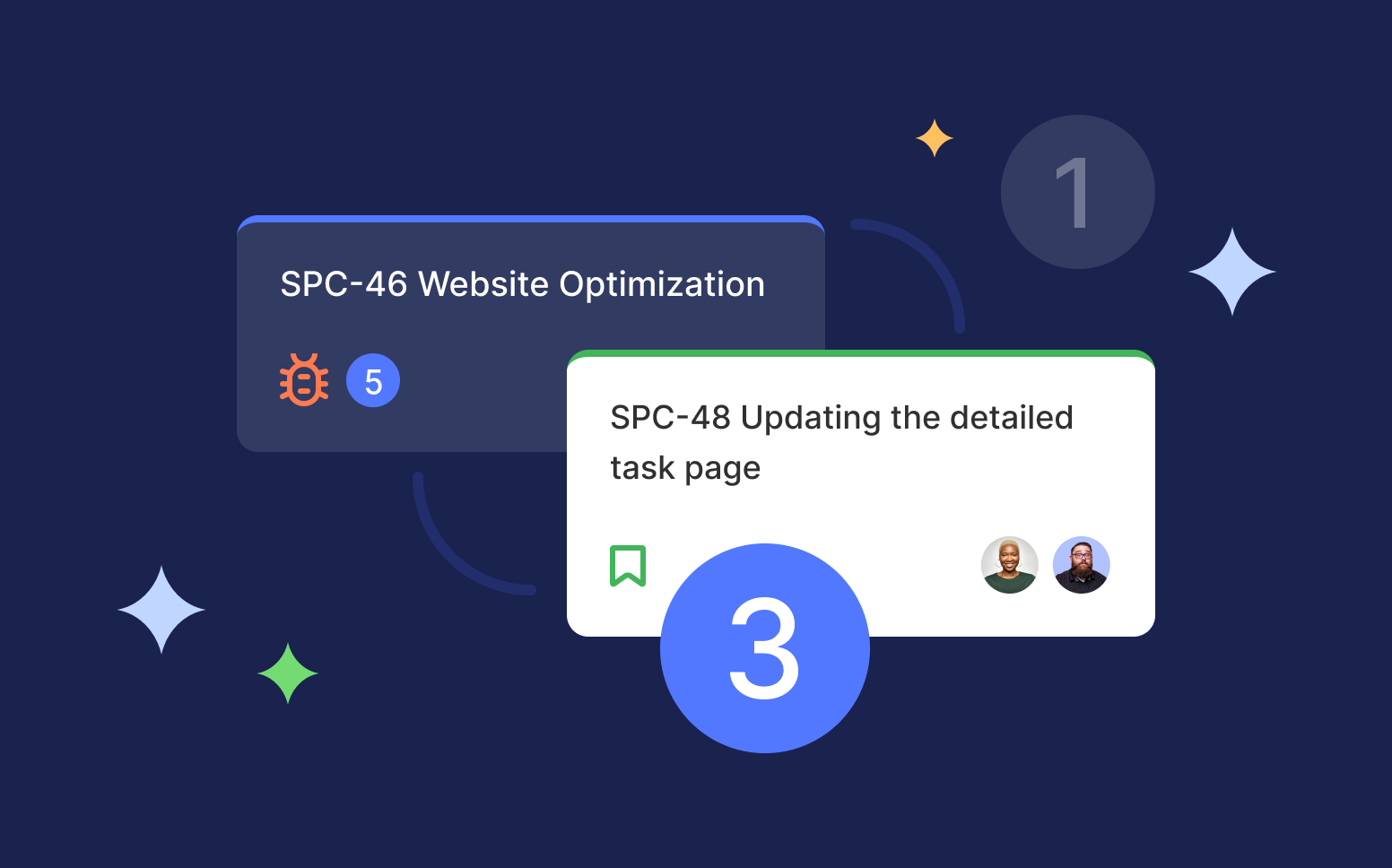What Is Scrum in Project Management?
Organizations’ need to respond quickly to market trends and produce higher quality products with greater efficiency has led to an increase in the use of the agile approach over the last decade. Agile began as a software development methodology and has spread to various other fields.
Scrum is a prominent framework for implementing Agile and is a member of the Agile family. Short iterations, known as sprints, are used in Scrum to create products and lay out a clear path for software development. For instance, companies like Scanteam use this framework because different niches need different solutions.
In this post, we provide a detailed outline of Scrum, including benefits, drawbacks, and the best practices in project management.
What Is Scrum and Why Do You Need It?
Scrum is a management framework that employs incremental procedures as part of a larger framework that engages cross-functional teams to achieve targets and adapt to changes. Scrum is an Agile project management style that entails a small team managed by a Scrum Master, whose primary responsibility is to eliminate any barriers to getting work done.
Work is done in sprints, usually 1-2 weeks in length (but never longer than 30 days). The team meets every day to discuss current tasks and any potential barriers. In a nutshell, it’s a project management style that enables rapid creation and testing, especially within a small team.
This project management method leads to increased client responsiveness, lower development costs, job satisfaction, and faster returns. Scrum is a fluid technique that considers many changing parts, teams, and goals as it proceeds, rather than a linear process.
Scrum also uses four ceremonies to give each sprint a specific structure: sprint planning, daily stand-up, sprint demo, and sprint retrospective. Within Scrum’s framework, particular roles are defined, making it a rigid but efficient approach.
How Does the Scrum Structure Work?
Scrum is a project management method that provides self-organizing teams to make complete products in specified iterations or sprints. It is advisable to follow the Scrum structure in order to succeed with Scrum.
Scrum Roles
Small groups of 3 to 9 people, known as Scrum Teams, work together without formal hierarchies to accomplish a common goal. Scrum is made up of three roles:
Product Owner
The Product owner is the advocate who knows the product’s business value inside and out. They convey the needs of the customer/stakeholder to the development team, but they are not in charge of the technical aspects of development. The Product Owner is also in charge of writing and prioritizing user stories.
Development Team
This team is responsible for all aspects of technical development. Team members are responsible for analyzing, designing, and coding as per the user stories’ priorities and communicating with each other.
Scrum Master
The Scrum Master is in charge of facilitating the Scrum team’s work. The Scrum Master collaborates with the Product Owner and development team to eliminate roadblocks and avoid distractions. Non-development team members’ communication to the development team is routed through the Scrum Master. (Scrum teams occasionally get together for a “Scrum of Scrums,” which typically includes the Scrum Masters from each team.)
The Application of Scrum in Projects
Scrum is implemented by adhering to Scrum ceremonies, which are held at certain times during a sprint. Scrum meetings can be divided into four categories:
Sprint Planning
Everyone on the Scrum team attends the Sprint Planning meeting. The product will be unveiled at this meeting, and everyone’s concerns and interests must be expressed. Priorities are outlined, and time estimates are made in this section.
Daily Scrum Meeting
This refers to the meeting that takes place every day during a sprint. They are brief and plan the development team’s daily activities. This is the spot to talk about any problems you’ve run into or any questions you have about a user story. The Scrum Master chairs the meeting attended by the development team.
Sprint Review
It is a presentation of the working product created during the sprint. This meeting occurs at the end of the sprint and is mainly used to offer stakeholders a detailed overview of the work completed.
Sprint Retrospective
A Sprint Retrospective is a post-mortem that examines how the team performed throughout the sprint and how it might be improved in the future.
Teams may also convene a backlog refinement meeting during a sprint to discuss backlog items and plan for the following sprint. This could include discussions about prioritizing Product Backlog items and breaking down backlog items into smaller parts.
Scrum Artifacts
Artifacts are something we create, such as a tool to solve a problem. Scrum project management involves extremely few artifacts that still add value to the company. The following are the important artifacts in Scrum:
Product Backlog
Product owners and managers use this list to keep track of all the tasks that need to be completed. Feature requests, upgrades, and fixes are listed here as input for the backlog during each sprint. To put it another way, it’s a “To Do” list for the entire team. When we learn new things or the market shifts, the Product Owner needs to keep revisiting, re-prioritizing and maintaining the product backlog.
Sprint Backlog
It’s a list of items, user stories, or bug fixes that the development team has decided to implement in the current sprint cycle. The team decides which items from the product backlog to work on in the sprint planning meeting before each sprint. A sprint backlog might be flexible and change throughout the sprint. However, the primary sprint goal — what the team intends to accomplish in this sprint – cannot be overlooked.
Burndown Charts
They are used to highlight how much work is left in a sprint and provide a quick way to see if a sprint is on track to complete all planned tasks.
Advantages of Scrum Methodology
In comparison to other agile development techniques, Scrum offers many benefits. It is currently the most widely used and accepted framework of reference in the software industry. The following are some well-known Scrum advantages:
Effortlessly Scalable
Scrum processes are iterative and managed inside defined work intervals, allowing the team to focus on certain functionalities for each phase. This allows the teams to expand the modules in terms of functionality, design, scope, and attributes in a transparent and orderly fashion, resulting in superior deliverables for the user.
Compliance with Expectations
The client defines their expectations, specifying the value that each project requirement/history offers, the team estimates them, and the Product Owner prioritizes them using this information. Regularly, the Product Owner checks if the requirements have been completed during the sprint demos, and provides relevant input to the team members.
Adaptability
Changes caused by the needs of consumers or market developments are addressed quickly. The methodology is built to respond to the shifting demands of complicated managing projects.
Reduced Time to Market
The client can begin using the project’s most critical features before completing the entire product.
Improved Software Quality
After each iteration, the functional approach and the requirement to acquire a functional version contribute to higher software quality.
Timely Prediction
Using this process, we can determine the team’s average sprint pace and, as a result, forecast when a specific function that is still in the backlog will be accessible.
Risk Reduction
By completing the most important functions first and understanding how quickly the team is progressing on the project, it is possible to eliminate risks in advance efficiently.
Improved Transparency and Project Visibility
Daily meetings, regular check-ins, and clearly defined roles provide everyone in the team a better grasp of the project, which helps to avoid conflicts and misunderstandings. Any issues are discovered before they become a problem and cause delays, allowing time to be controlled and processes to move forward.
Cross-Team Accountability
The team decides on the work, and any complaints or suggestions are always acknowledged. Because no single project manager leads the team or job silos, team members have more collaboration and empowerment.
Cost Reductions
All concerns and adjustments are visible and shared as soon as they occur, reducing costs and improving product quality across the board. Because sprints are brief and processes are broken down, errors can be corrected quickly.
Disadvantages of Scrum Methodology
On the other hand, there are significant drawbacks to such a quick and incremental project management procedure. The following are some of the drawbacks:
Creep in the Scope
Project scope can be a major issue when change is welcomed freely, and goals are variable. Stakeholders frequently want to add extra functionality by regularly altering the process and goals.
Teams Are Difficult to Manage
Scrum was created with small teams in mind. Small teams are considered when developing procedures, roles, and artifacts.
Collaboration Needs Knowledge and Dedication
Due to the small size of scrum teams and the lack of clearly defined responsibilities, the team must be familiar with all aspects of Scrum and its principles to succeed. Members of the team who lack technical knowledge or devotion pose a threat to the team’s objectives.
Scrum Masters Must Be Highly Knowledgeable
A failed product might be caused by selecting the wrong Scrum Master. The project will fail, and the Scrum process as a whole will fail if the Scrum Master tries to manage the team rather than overseeing and trusting them.
Risk of Inaccuracies
Accuracy in project timelines and budgets might be affected if tasks are not clearly outlined in the meeting. If the original goals and task lists are unclear, planning becomes more difficult, and sprints can take longer.
Selecting the Software
Today, you can choose from a wide variety of solutions to employ the Scrum framework for your projects. The most popular (yet, not the simplest) is obviously Jira. Some of the all-in-one software like Flowlu also provides capabilities for handling Scrum projects and Agile teams. It incorporates burndown charts, story points, backlog, sprints and other tools for effective Agile project management.
If you need to save your money and manage your entire business, including Scrum projects, in one place, you’re likely to choose one of simpler yet more feature-rich all-in-one platforms rather than specific tools dedicated to Agile management.
Conclusion
Companies can use the Scrum methodology to tackle complex adaptive tasks while providing high-value solutions. Scrum’s beliefs, principles, and practices have been shown to give companies the flexibility they need to respond quickly to changing market conditions and deliver high-quality goods to customers faster while making better use of available resources.
The Scrum Framework has remained a popular choice for practitioners of agile software development. With little sign of slowing down, its popularity continues to rise.
Read more: What is Agile Project Management and How Flowlu Uses It











